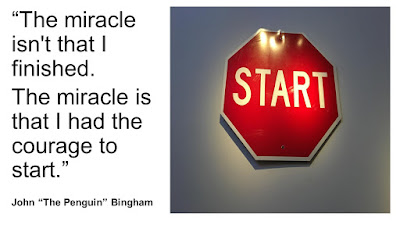I have always been an early morning, solo runner and I am remaining so during the Covid-19 pandemic. Obviously social distancing meant I shift my routes and running time to avoid other people. But even before social distancing, my solo running elicited basically the same three questions:
1. “You run alone? Aren’t you lonely?”
2. “Aren’t you afraid to run alone?”
3. “Isn’t running alone boring?”
1. “You run alone? Aren’t you lonely?” - No, I’m not lonely. Previously many people have suggested I join a running group, but I am an introvert. I choose to follow Susan Cain’s advice,
“Don't think of introversion as something that needs to be cured...Spend your free time the way you like, not the way you think you're supposed to.”
I like running solo. I don’t feel lonely, I feel free to be who I really am. Smith, the runner in the novel
The Loneliness of a Long Distance Runner, wasn’t lonely when he ran solo, he only felt lonely when he was forced to compete. He sums up my feelings about running solo. He said,
“Sometimes I think I’ve never been as free as during the couple hours when I’m trotting up the path.”
2. “Aren’t you afraid to run alone?” - I appreciate the concern for me expressed in this question, but, no. To live your life is to risk your life. You’re never perfectly safe -- no human being ever was or ever will be. But you can control the things you have control over by being prepared.
Being prepared doesn’t mean living in fear, it simply means being aware of your surroundings and creating safer running situations. Here are a few ideas:
·
Be knowledgeable – research your routes carefully keeping traffic flow, lighting and “comfort level” in mind. If a neighborhood doesn’t feel right to you, then choose another route.
·
Be visible – run against traffic and wear reflective/illumination gear. Avoid running routes with tall vegetation or fences obscuring driveways. If a car is backing out, it won’t see you.
·
Be confident – maintain an upright, not a slumped posture. Look passersby’s in the eye and greet them. If having pepper spray makes you feel more confident, take it. Put it in your palm and flash it as you wave to that guy that seems a little “creepy.” Also, completing a self-defense course really helped a friend of mine to start walking a solo mile every day, it might help you, too.
·
Be aware –pay attention to what is going on around outside of you and inside of you (body, breath, & mind); avoid electronics, earbuds make you unaware, an attractive target for “bad guys.” Also, make someone else aware of your route before you head out.
·
Take your phone – use an armband or waistband to hold your phone so it is available in case of an emergency.
3. “Isn’t running alone boring?” – I have never understood this question. The fact that you’re alive (and moving) is amazing, how can anything be “boring?”
You control whether running solo is boring or not! Here are a few very simple “boredom busters”:
- Look around. What do you see? – Interesting houses? A new business? Parks to explore? How many women versus men did you see running/walking? (Women win 9 out of 10 times). Look.
- Listen. What do you hear? - Voices? Machines? How many people do you greet with, “Good Morning?” What song or mantra is playing in your mind? Listen.
- And, most importantly- Let your mind wander. Here is a quote from Haruki Murakami that, I think, best describes my favorite “boredom buster”: “The thoughts that occur to me while I’m running are like clouds in the sky. Clouds of all different sizes. They come and they go, while the sky remains the same sky as always. The clouds are mere guests in the sky that pass away and vanish, leaving behind the sky.” Let your mind wander.
Thoreau wrote,
“I love to be alone. I never found the companion that was as companionable as solitude.” During the greater part of my day, I truly enjoy the companionship of family, friends, and co-workers. But every morning I set aside time for the companionship of solitude – I run solo.
Recommended Reading:
The Loneliness of the Long Distance Runner by Alan Sillitoe
A Philosophy of Walking by Frederic Gros
Quiet: The Power of Introverts in a World That Can't Stop Talking by Susan Cain
Walden by Henry David Thoreau
What I Talk About When I Talk About Running by Haruki Murakami















